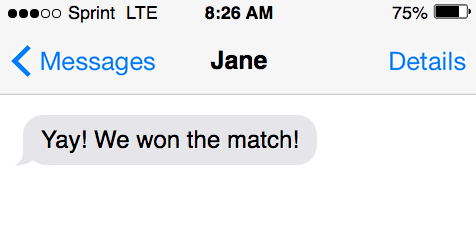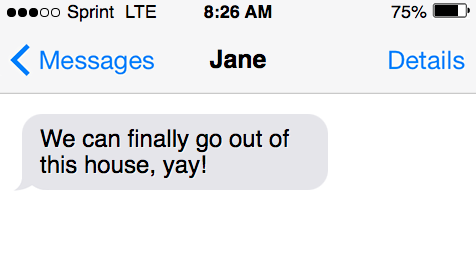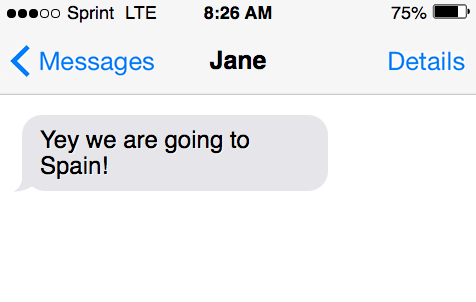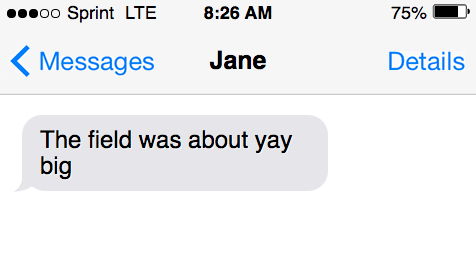The expressions yay, yey, nay, and ney can confuse non-native English speakers. Depending on your culture, they can also mean different things.
In this guide, we’ll explain the meaning, etymology, and usage of the words yay, nay, yey, and ney.
Don’t let the apparent perplexity scare you. Once you understand the meaning of these words and where they are used, you can easily use them while speaking or writing.

What does “Nay” mean?
The word nay has two primary meanings, derived from the word no.
Nay is used in a formal speech to introduce an idea that’s more impactful than the idea already expressed. Have a look at this example:
- “It’s my pleasure, nay, it’s my honor to introduce our guest tonight”
In the above example, nay is used to emphasize that it’s more than a pleasure for the speaker to introduce the guest – it’s an honor.
In the second meaning of nay, the word simply means “no”. Here’s an example:
- “Nay lad, don’t worry about it”
This expression is primarily used in the North of England and Scotland.

What does “Yay” mean?
Like nay, yay also has two meanings. While one is derived from ‘yes’, the other isn’t related to it.
In the first meaning, yay is a positive exclamation. It’s a synonym for hurray in this sense. Check out the example below to better understand its meaning in this context:
- “Yay! We made it!”
The second meaning of yay is restricted to British English and is a colloquial use of the term. Yay means “to a particular degree” in this context. Have a look at the following example to understand how it’s used:
- “The field was about yay big”
This expression is generally accompanied by hand gestures or other non-verbal modes of communication to convey the meaning.
What does “Yey” mean?
“Yey” is just another variation of yay. However, “yey” is not used to denote the degree of something, as we saw in the second meaning of yay.
Yay and yey can generally be used interchangeably in American English. Both come from the same root word, yes and are used to express joy, affirmation, consent, and approval.
What’s the difference between “Yey” and “Yay”
There’s not much difference between yey and yay, except in some dialects of British English. For example, you cannot say, “It was about yey long.” You can say, “It was about yay long.”
In somecontexts, you can use them interchangeably. For example, you can say “yay! we’ve made it!” or you can say “yey! we’ve made it”. Both are correct, but yay is used more than yey. Yey is also often seen as a misspelling of yay.

The etymology of these words
Now, let’s have a look at the etymology of these words — where they came from and how they have evolved over time.
The etymology of “yay”
Yay comes from the expression yeah, which is a common derivative of yes. Yeah has been present in widespread usage since at least the 1960s. However, the history of yeah goes much back further.
Old English word gēa (West Saxon), and ge (Anglian) are the parent words of yes, yeah, and yay. Both gēa and gē mean “so, yes.” The Old English expressions are, in turn, derived from the proto-Germanic prefixes ja– and jai-. Similar expressions are found in German, Danish, Norwegian, and Swedish.
The etymology of “nay”
The word nay is of Scandinavian origin. The Old Norse language had the expression nei, meaning ‘not.’
However, the word nay also comes from the English word no. No comes from Old English na, which also means no. The Old English word probably comes from the Proto-Germanic expression ‘one’.
As you can see, the sound of the words are very similar – no, nay, nei, ne, na. They all have the same meaning, which points to their common origin.
The etymology of “yey”
The word yey comes from the word yay. As we already mentioned, it may have been a misspelling of yay that stuck. Such examples abound in the English language and most languages around the world. The words Culprit, Nickname, and Syllabus all came from misspellings of the original words.

Correct spelling of “yay” or “nay”
Yay is spelled Y-A-Y, and nay is spelled N-A-Y. But that’s not all you need to know about the correct spelling of these words.
Y-E-A-H is close to Y-A-Y, and both are used interchangeably. Both yeah and yay are correct.
In the case of nay, the closest related word is no. Nay has become obsolete to a degree in modern English. However, it’s still an integral part of various British dialects, particularly Northern dialects.
How to use “Yay”
You can use the word yay to express joy. It is the most widely accepted use of the expression and is not considered wrong in any context. Yay is generally used with an exclamation mark, but it’s not always necessary. Sometimes not using an exclamation mark is also seen as a sign of sarcasm.
Examples in sentences
There are many ways to use yay in sentences. Check out the following examples:
- “Yay! We won the match!”
- “We can finally go out of this house, yay!”
- “Yay I am so glad you made it!”
Depending on the context, yay can also be used sarcastically.
How to use “Yey”
You would use yey the same way you would use yay. The meanings of both words are the same and are used in the same contexts. Let’s look at some examples to understand the similarity between the two expressions better.

Examples in sentences
Here’s how you can use yey speech and writing:
- “Yey we are going to Spain!”
- “There was a loud roar of ‘Yey!’ as the team scored the winning goal”
- “I am so happy we are finally doing this, yey!”
You can use yey when you want to express joy and delight at some event, thing, person, or activity. Avoid writing yey in formal situations. Stick to yay or yeah.
“Yey” is a type of slang term frequently found in internet or text conversations.
How to use “Nay”
Using nay is more complicated than using yay, but that’s only because nay can be used in two different contexts. It can emphasize a more significant idea or a simple ‘no.’
Check out the examples to understand the difference.
Examples in sentences
- “Nay, I am not doing it” (Negative)
- “I was happy, nay, I was delighted at the news” (Emphasis)
- “Nay, that’s not happening” (Negative)
- “Let’s go on a Europe tour, nay, let’s go on a world tour! (Emphasis)

Common questions
Questions about the English speaking world.
What does “nay vote” mean?
On C-SPAN or CNN, someone might see a “yea or nay” vote. These are referring to the “yes” and “no” polls. The word “yea” is indicating a vote for the yes. A “yea vote” or “yes vote.” The indication is for an affirmative vote positive or negative.
Can “yey” get used to express excitement?
Typically “yay” will get used to express excitement. The interjection “yay” is frequently used in the middle, start, or ending of sentences. The modern usage of “yay” is an expressive form. Similar to an emoji. It is considered a slang term frequently found in text messages (conversations).

Sources
Inside this article
Fact checked:
Content is rigorously reviewed by a team of qualified and experienced fact checkers. Fact checkers review articles for factual accuracy, relevance, and timeliness. Learn more.
Core lessons
Glossary
- Abstract Noun
- Accusative Case
- Anecdote
- Antonym
- Active Sentence
- Adverb
- Adjective
- Allegory
- Alliteration
- Adjective Clause
- Adjective Phrase
- Ampersand
- Anastrophe
- Adverbial Clause
- Appositive Phrase
- Clause
- Compound Adjective
- Complex Sentence
- Compound Words
- Compound Predicate
- Common Noun
- Comparative Adjective
- Comparative and Superlative
- Compound Noun
- Compound Subject
- Compound Sentence
- Copular Verb
- Collective Noun
- Colloquialism
- Conciseness
- Consonance
- Conditional
- Concrete Noun
- Conjunction
- Conjugation
- Conditional Sentence
- Comma Splice
- Correlative Conjunction
- Coordinating Conjunction
- Coordinate Adjective
- Cumulative Adjective
- Dative Case
- Determiner
- Declarative Sentence
- Declarative Statement
- Direct Object Pronoun
- Direct Object
- Diction
- Diphthong
- Dangling Modifier
- Demonstrative Pronoun
- Demonstrative Adjective
- Direct Characterization
- Definite Article
- Doublespeak
- False Dilemma Fallacy
- Future Perfect Progressive
- Future Simple
- Future Perfect Continuous
- Future Perfect
- First Conditional
- Irregular Adjective
- Irregular Verb
- Imperative Sentence
- Indefinite Article
- Intransitive Verb
- Introductory Phrase
- Indefinite Pronoun
- Indirect Characterization
- Interrogative Sentence
- Intensive Pronoun
- Inanimate Object
- Indefinite Tense
- Infinitive Phrase
- Interjection
- Intensifier
- Infinitive
- Indicative Mood
- Participle
- Parallelism
- Prepositional Phrase
- Past Simple Tense
- Past Continuous Tense
- Past Perfect Tense
- Past Progressive Tense
- Present Simple Tense
- Present Perfect Tense
- Personal Pronoun
- Personification
- Persuasive Writing
- Parallel Structure
- Phrasal Verb
- Predicate Adjective
- Predicate Nominative
- Phonetic Language
- Plural Noun
- Punctuation
- Punctuation Marks
- Preposition
- Preposition of Place
- Parts of Speech
- Possessive Adjective
- Possessive Determiner
- Possessive Case
- Possessive Noun
- Proper Adjective
- Proper Noun
- Present Participle
- Prefix
- Predicate



